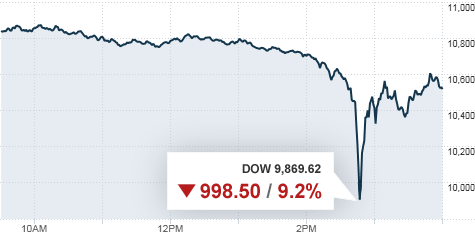 The Flash Crash, which happened after 2:30 pm EST on May 6, 2010, was a sudden, massive drop and recovery in securities prices. During the crash, the Dow Jones Industrial Average fell by nearly 1,000 points and bounced back within 20 minutes. The Flash Crash ranks as the biggest one-day, point decline in the Dow’s history.
The Flash Crash, which happened after 2:30 pm EST on May 6, 2010, was a sudden, massive drop and recovery in securities prices. During the crash, the Dow Jones Industrial Average fell by nearly 1,000 points and bounced back within 20 minutes. The Flash Crash ranks as the biggest one-day, point decline in the Dow’s history.
After the crash, the Securities and Exchange Commission (SEC) and the Commodity Futures Trading Commission (CFTC) investigated the incident and attempted to uncover the cause of the crash.
Initially, many in the industry speculated that the crash was caused by high frequency trading (HFT), which soon became the focus for regulators. Many economists also said that the debt crisis in Greece made the markets extremely volatile that day, and therefore could have been a major contributor to the Flash Crash. In response, on June 10, 2010, the SEC implemented the circuit-breaker rule, which meant that the SEC would automatically stop trading transactions for any stock in the S&P 500 once a price changed by more than 10% in a five-minute period.
By September 30, 2010, the SEC and CFTC released a report titled “Findings Regarding the Market Event of May 6, 2010,” that covered potential causes of the crash.
The report cited a mutual fund firm that tried to sell a large number of e-mini contracts in attempt to hedge an equity position. The algorithm the trader chose for this major transaction, slated to take place over about 20 minutes, caused other facets of the industry to react and spurred an electronic frenzy amid an already volatile market. As the firm’s sell-off took place, HFT firms and others in the futures markets contributed to the intense selling pressures, resulting in the sudden, automatic downward spiral.
However, the findings of the report have not entirely cleared up the mystery, leaving the exact cause of the crash unknown. Many financial regulators believe that the crash was the result of a series of events.
The U.S. Congress and the SEC have continued to investigate the crash and to consider ways to protect the markets from another dip in the future.
Need a Reprint?
Leave a Reply